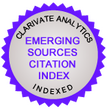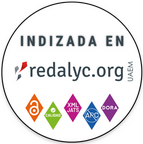SmartPLS 3: specification, estimation, evaluation and reporting
DOI:
https://doi.org/10.13058/raep.2019.v20n2.1545Keywords:
Structural Equations Modeling, SmartPLS 3, Partial Least SquaresAbstract
The structural equation modeling with partial least squares estimation (PLS-SEM) has been used in a wide variety of research areas, increasing the number of articles published using this method in an exponential way. There are several reasons for this to be happening, but one of them is the fact that the SmartPLS software facilitated the use of PLS-SEM. This article aims to present seven didactic examples with real data sets available to those who want to learn or teach PLS-SEM, dealing with such topics as measurement model evaluation, structural model evaluation, multicollinearity, second-order latent variable, mediation, moderation with numerical and categorical variables (MGA - multi-group analysis).
Downloads
Downloads
Published
How to Cite
Issue
Section
License
By publishing a manuscript in the journal Administração: Ensino e Pesquisa (RAEP), the authors declare that the work is of their exclusive authorship and therefore assume full responsibility for its content. The authors grant RAEP a non-exclusive rights license to use the work in the following ways:
(1) Sell and / or distribute the work in hard copies or electronic format.
(2) Distribute parts of the work as a whole to promote the journal through the internet and other digital and printed media.
(3) Record and reproduce the work in any format, including digital media.
Authors and readers are permitted to share the material, use it in classes, for presentations and also for other purposes, and to create new knowledge based on any RAEP publication, as long as the due credit is attributed to the original work and the respective author(s), through citations, references, and other means.
The journal adopts preventive measures to identify plagiarism using software designed for this purpose.
RAEP does not charge authors for the article submission nor for the publishing of approved articles.
In line with the journal's policies, each published article will be given a Creative Commons CC-BY 4.0 license.










